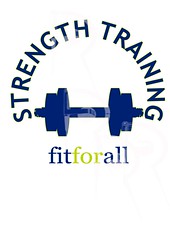When most people think of strength training, they imagine big buff body builders. But contrary to popular belief, when done properly, strength training can be safe and beneficial to your child. Here are a number of benefits children can receive from strength training:
- Helps with sports performance. Many preteens want to start a strength training program to improve their sports capabilities. When done properly, strength training can help your child become a better athlete. Just remember that it should be used to help with sport performance, not be a sport itself. Pre-teens and teens' bodies are not ready for extreme muscle building.
- Can prevent injuries. The stronger your child is, the less likely they are to hurt themselves when participating in other physical activities. You may think that they can hurt themselves through strength training, but injuries are usually minor and can mostly be avoided when proper technique is used.
- Improves child’s stamina. This is helpful when it comes to sports, but can be a plus in all aspects of life. Improved stamina can help your child get through long, physically and mentally demanding days with less pain and stress.
- Improves overall physical health. Strength training can strengthen bones, lower cholesterol, improve heart and lung function and help your child maintain a healthy body composition - all very important things considering today's growing epidemic of obesity.
- Teaches healthy exercise habits. With the percentage of obese children today, most parents should be concerned about teaching their child healthy exercise practices, and strength training is a way to do it. They’ll learn to be able to stick with a healthy exercise program and not overdo it. For this reason, you should also incorporate regular aerobic activity into your child’s schedule.
- Builds self esteem. A lot of how your child feels about himself or herself comes from the way they look. If they start looking and feeling better, they’ll feel better about themselves. They will also build their self esteem by knowing that they can set goals and achieve them in a healthy manner - which is a great skill to take into adulthood.
However, if considering strength training for your child, there are some safety concerns to be aware of. If you’re going to let your child do strength training, make sure it is done properly, and take into account the following tips.
- Don’t start too young. In order to master strength training, a child must be able to do the movements in proper form. Young children are still learning to control their motor functions and shouldn’t be distracted by building muscle
- Consult your child’s pediatrician. You doctor can not only tell you if your child is physically capable of starting strength training, they can also help you choose an appropriate exercise program and safety measures.
- Start slow. Make sure your child has mastered the movements before allowing weights or other forms of resistance to be added. Many injuries in strength training are caused by incorrect form. In order to keep your child healthy, be sure they can perform the activity without resistance before letting them use weights. Remember to add weights slowly. Strength training is meant to help your child, not get them stronger as fast as possible. A child should be able to do 15 reps of an exercise properly before moving on to more resistance.
If you follow these safety guidelines, you will start to see all the benefits that strength training can bring to your child’s life in no time.



No comments:
Post a Comment